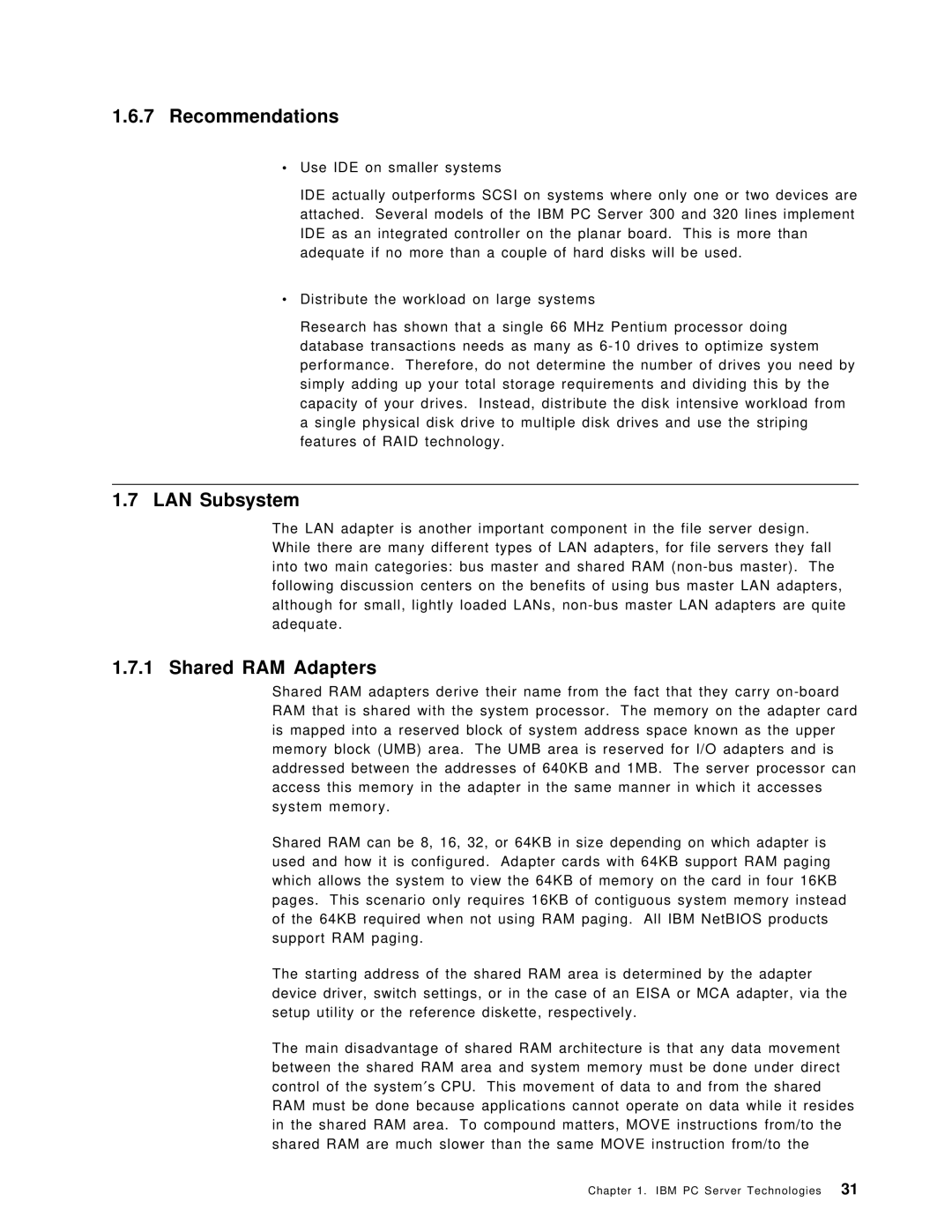1.6.7Recommendations
∙Use IDE on smaller systems
IDE actually outperforms SCSI on systems where only one or two devices are attached. Several models of the IBM PC Server 300 and 320 lines implement IDE as an integrated controller on the planar board. This is more than adequate if no more than a couple of hard disks will be used.
∙Distribute the workload on large systems
Research has shown that a single 66 MHz Pentium processor doing database transactions needs as many as
1.7 LAN Subsystem
The LAN adapter is another important component in the file server design. While there are many different types of LAN adapters, for file servers they fall into two main categories: bus master and shared RAM
1.7.1 Shared RAM Adapters
Shared RAM adapters derive their name from the fact that they carry
Shared RAM can be 8, 16, 32, or 64KB in size depending on which adapter is used and how it is configured. Adapter cards with 64KB support RAM paging which allows the system to view the 64KB of memory on the card in four 16KB pages. This scenario only requires 16KB of contiguous system memory instead of the 64KB required when not using RAM paging. All IBM NetBIOS products support RAM paging.
The starting address of the shared RAM area is determined by the adapter device driver, switch settings, or in the case of an EISA or MCA adapter, via the setup utility or the reference diskette, respectively.
The main disadvantage of shared RAM architecture is that any data movement between the shared RAM area and system memory must be done under direct control of the system′s CPU. This movement of data to and from the shared RAM must be done because applications cannot operate on data while it resides in the shared RAM area. To compound matters, MOVE instructions from/to the shared RAM are much slower than the same MOVE instruction from/to the
Chapter 1. IBM PC Server Technologies 31
